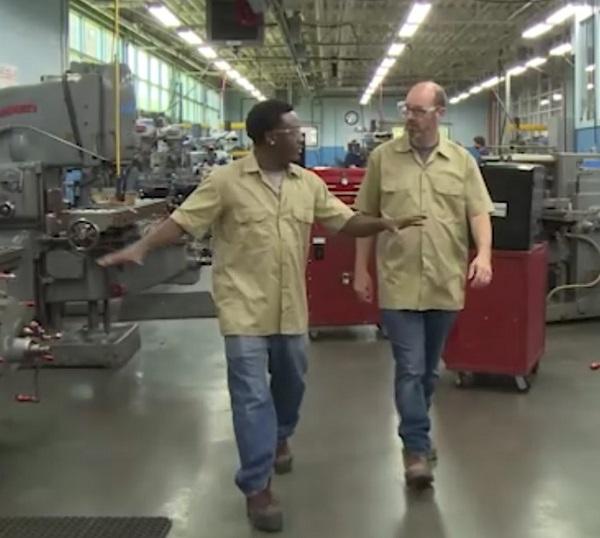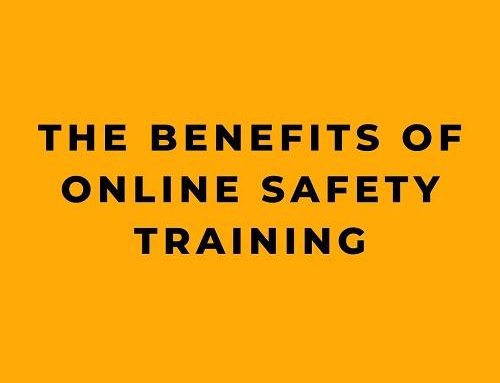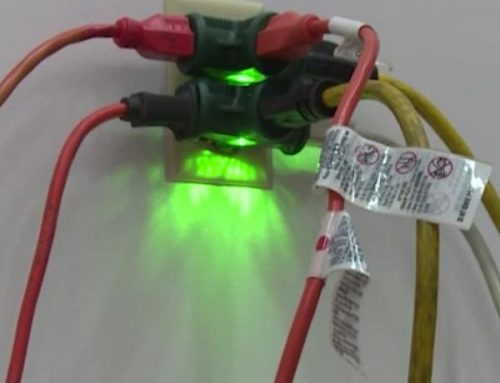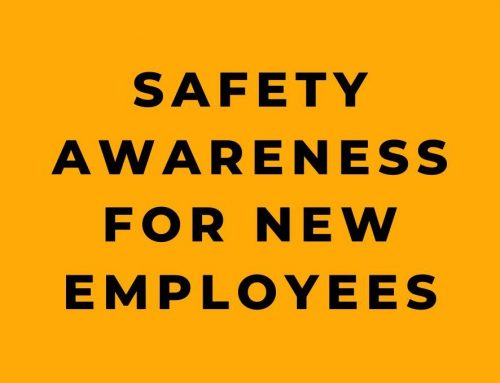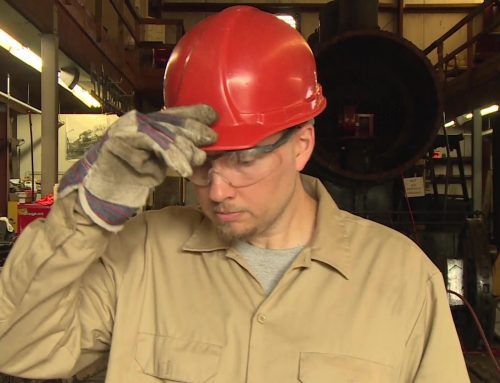Workplace safety should be the top priority for every employee. However, in the rush to meet deadlines and quotas, it’s easy to become complacent and ignore safety protocols. This comprehensive guide to workplace safety orientation is derived from an online training course outline focused on hazard awareness, emergency preparedness, proper equipment use and other critical topics. Proper safety training and adherence to guidelines helps prevent injuries and fatalities. By following the major program points highlighted here, both employers and staff can foster a culture of safety first.
The Key to Safe Work:
Mental Preparation and Focus
When the workday begins, employees face many demands competing for their attention: orders to fill, production quotas to meet and deadlines to reach. Under such pressures, it’s tempting cut corners on safety, but one moment of inattention can lead to disaster. While productivity matters, the true bottom line is completing the job safely through proper precautions, hazard protection and emergency readiness.
Successfully working safely requires complete focus and concentration. Even routine tasks contain hidden risks that can spark accidents. By giving work full mental attention, employees are less likely to make costly errors. Maintaining focus requires blocking out dangerous distractions that can lead to impaired judgment.
Handling Workplace Frustrations
Feelings of anger and frustration are prime threats to clear focus. When emotions run high, it’s all too easy to act rashly and disregard safety procedures. Decisions made in the heat of the moment can have catastrophic outcomes.
If feeling angry or frustrated, it’s critical to step back and regroup. Taking a short break to breathe deeply or switch tasks allows emotions to cool and concentration to return. Only resume the original work when calm and focused.
Avoiding Substance Impairment
Drug and alcohol use diminishes focus and alters mental state. These substances have no place in the work environment where clear thinking is a must. However, employees must also consider the lingering effects of drinking or drug use during off hours.
Residual effects can impair judgement and coordination long after a substance was last used, leading to accidents, errors and injuries. Those who drink should do so in moderation and refrain from driving afterwards. Never report to work impaired or suffering aftereffects from drinking or drug use.
Following Company Substance Policies
Employers often address substance use in official policies. Workers must follow these rules and immediately inform supervisors if co-workers seem impaired or “under the influence” on site. Ignoring substance abuse can have devastating consequences for inebriated employees and innocent bystanders.
Using Medications Responsibly
Prescription and over-the-counter medications also influence abilities. Never operate equipment while taking drugs that could hamper coordination or cognition. Verify with a pharmacist whether medications will impact performance. Inform supervisors about any prescriptions that might interfere with safe work.
Staying Focused Involves:
- Maintaining a clear mind at all times
- Concentrating fully on the task at hand
- Remaining aware of surroundings
- Avoiding distractions like frustration, drugs and alcohol
- Using medications only after verifying they won’t impair work
With proper mental preparation, employees can tackle jobs while prioritizing safety.
Recognizing and Eliminating Hazards
Along with concentration, hazard awareness helps prevent workplace accidents and injuries. Identifying and mitigating risks is a key responsibility for every employee. Most dangers can be spotted and controlled before leading to incidents.
Performing Work Area Inspections
Begin each shift by inspecting the work area for any safety issues. Check for spills, loose rails, blocked fire exits, frayed electrical cords and other red flags. Also ensure tools are in good operating condition. Taking a few minutes to spot problems allows for proactive solutions before an accident occurs.
Maintaining Clear Egress
Clear walkways, hallways and exits ensure safe movement and allow quick evacuation in emergencies. Never block aisles with materials or clutter. It only takes a small obstacle to cause a slip, trip or fall. Keep escape routes accessible since blocked exits can have catastrophic results if a fire or other crisis occurs.
Securing Precarious
Storage Protruding objects and overstocked shelves are open invitations to incident and injury. Loose rails create falling object dangers. Heavy items should rest at waist level, with lighter objects overhead. Bulging shelves lead to collapsed loads and crushed body parts. Report dangerously overloaded racks so the situation can be remedied.
Reducing Fire Hazards
Fire prevention is also key. Sparks from machinery or damaged electrical equipment can easily ignite flammable materials and trash. Limit volume of flammable liquids allowed in work areas. Dispose of oily rags, keeping cardboard and paper clutter at a minimum. A small ignition source combined with the wrong materials can spark calamity.
Maintaining Good Housekeeping
Workplace housekeeping completes the job after equipment operations, helping to prevent future issues. Leave the area better than found by cleaning up spills, putting away tools and disposing of unneeded materials. Return items to assigned locations so everything is easy to find and accounted for.
Overstuffed shelves lead to stock collapse and inventory headaches down the road. Reasonable storage allows for ergonomic loading and unloading. Report disarray that seems beyond personal control of workers, like cluttered corridors or overflowing dumpsters. Everyone pitches in for tidiness that prevents accidents.
Hazard Prevention Requires:
- Starting shifts with inspection of work areas
- Ensuring clear walkways and exits
- Securing unstable stored materials
- Reducing available ignition sources
- Maintaining orderly and organized workspaces
Spotting and mitigating risks prevents avoidable incidents, keeping the workplace safe.
Using Protective Equipment to Guard Against Hazards
Even safety-conscious workplaces present some unavoidable hazards. Proper use of personal protective equipment (PPE) helps shield employees from harm when risks cannot be fully controlled. PPE places barrier between workers and workplace dangers.
Choosing Sturdy Foot Protection
Hazards start at ground level, making protective footwear essential in many work environments. Safety shoes with slip-resistant soles provide traction on slick surfaces. Steel toes offer impact protection if items are dropped. Employees should select shoes that address hazards they face and consistently wear them each day.
Donning Protective Gloves
Hand protection is another priority. Gloves shield against splinters, sharp edges, abrasions and chemicals. Leather gloves fend off cuts and abrasions. Rubber gloves safeguard against liquid chemicals and electric shocks. Matching glove material to the hazard provides optimal protection.
Shielding Eyes from Debris
Though bulky, eye protection prevents painful and debilitating injuries. Safety glasses defend against debris, chemicals and projectiles. Goggles offer nearly sealed protection from liquids and dust. Face shields provide further coverage for extreme hazards. Consult with supervisors to select appropriate eye protection for the job. Never take chances with vision.
Safeguarding Hearing
Hazardous noise causes permanent hearing damage and long term issues like tinnitus. Ear plugs placed in the ear canal attenuate sound. Ear muffs cupped over the ears also reduce noise. For extremely loud environments, both plugs and muffs can be worn together for maximum sound dampening.
Filtering Out Airborne
Hazards Toxic dust, fumes and gases require respiratory protection. Particle masks filter out dust. Chemical cartridges absorb vapors. Supplied air respirators deliver fresh air to the wearer. Take time to ensure the right respirator is chosen for the hazard. Also verify proper fit through seal checks each time the device is donned.
Covering Up Against Hazards
Protective clothing safeguards the torso against chemical splashes, flames and abrasions. Leather aprons shield against sparks. Disposable suits keep off sludges and slurries that can harm skin. Hard hats are mandatory near falling objects or low overhead obstructions. Use PPE combinations to handle multiple hazards present.
Essential PPE and Proper Use:
- Sturdy shoes with non-slip soles and steel toes
- Work gloves made of the right materials
- Sealed goggles and face shields near liquids or projectiles
- Ear plugs and muffs in loud environments
- Respirators matched to contaminants
- Protective apparel like aprons, suits and hats
The right PPE worn properly defends against injury on hazardous jobs.
Following Safe Work Practices Personal protective equipment shouldn’t give false confidence. Unsafe work practices still lead to incidents and near misses. Carelessness causes catastrophic injuries, so each employee should hone safe working habits.
Using Tools Correctly Power tools and hand tools improve efficiency yet also introduce hazards, especially when handled recklessly. Always choose the right tool for the job and verify tools are undamaged before use. Follow manufacturer instructions closely. Improper tool use leads to serious laceration and amputation risks.
Maintaining Electrical Safety Equipment powered by electricity warrants extra precautions. Inspect power cords to identify worn insulation and exposed wires. Overloaded outlets can lead to fires, so avoid plugging multiple devices into a single receptacle. Always unplug devices before repairing them to avoid electrocution hazards.
Observing Machine Safety Machinery with moving parts can easily entangle loose hair and clothing leading to disfigurement and death. Keep long hair tied back and avoid working in baggy clothes near machinery. Ensure appropriate machine guards are kept in place to prevent access to moving components that could catch appendages or garments.
Moving Material Safely
Manual material handling introduces ergonomic risks. Use material handling equipment like carts, dollies and pallet jacks to move heavy or awkward items. Get assistance from co-workers when needed. Attempting to move more than can be safely handled leads to strains and back injuries. Only operate specialized equipment like forklifts after formal training.
Practicing Proper Body Mechanics Bending and lifting items also leads to injury if done incorrectly. Keep the back straight and lift with the legs when hoisting objects. Avoid twisting while lifting. Bring loads close to the body to keep the back aligned. Look forward when carrying items so you can see where you are going. Take care when pushing, pulling or reaching as well.
Safe Work Habits Include:
- Using each tool only for its intended purpose after inspection
- Maintaining electrical safety through cord inspections
- Keeping machine guards in place
- Moving materials safely using proper techniques and assistance
- Lifting properly with the legs using good posture and alignment
Shortcutting safety protocols increases the chances of incidents and injury.
Preparing for Emergencies
Prevention and protective equipment improve workplace safety, yet accidents still occur. Employees must prepare for workplace emergencies through proper training and quick thinking. Readiness leads to effective response when lives hang in the balance.
Studying Chemical Hazards Start by reviewing Safety Data Sheets (SDSs) to identify flammable, reactive, corrosive and toxic substances present. SDS information guides proper handling and storage during normal use. It also provides response steps should spills or exposure occur. Never use a chemical without understanding potential hazards.
Responding to Chemical Spills
When spills happen, follow emergency response guidelines. Contain and block spills from entering waterways. Have designated spill kits available with appropriate personal protective equipment (PPE), neutralizing agents, and absorbent pads. Clean spills safely based on SDS directions. Water flushing is the first response for skin or eye exposure.
Locating Emergency Facilities Know exact locations of emergency eyewashes and showers and verify they function properly. Flush eyes or skin for 15 minutes after chemical exposure before seeking medical attention. Maps showing locations of safety facilities should be posted visibly. Locate first aid supplies and verify adequately stocked.
Preparing for Fires Develop fire emergency knowledge since flames can spread quickly. Attend hands-on fire extinguisher trainings to learn how to safely extinguish small fires. Recognize various extinguisher types and how to select the right one for the burning material. Study the facility Emergency Action Plan to understand fire reporting procedures and evacuation routes. Do not attempt to extinguish fires that are too large or that involve hazardous chemicals.
Responding to Injuries
Despite best efforts, injuries still occur. Avoid moving injured persons unless they are in immediate danger. Call for help and seek medical aid promptly even for injuries that seem minor initially. Only provide first aid treatment appropriate to your training such as CPR or stopping bleeding. Do not administer medications. Let trained responders make treatment determinations.
Emergency Preparedness Involves:
- Reviewing chemical SDS information before handling hazardous substances
- Understanding how to correctly respond to chemical spills
- Locating emergency washing facilities and first aid kits
- Learning how and when to use fire extinguishers
- Getting immediate medical attention after injuries occur
Preparedness and quick reaction can make the difference between life and death in accidents and emergency situations.
Conclusion: Creating a safe workplace requires vigilance from all employees and a culture of safety first. While meeting productivity goals is important, the true measure of success is completing the shift without incident or injury. By maintaining concentration, identifying hazards proactively, using protective equipment and following safe practices, risks are reduced. Emergency preparedness and quick response allows for effective life-saving actions if an accident does occur. This safety orientation guide based on an online training outline provides the blueprint for improved hazard awareness. Putting these principles into daily action helps prevent tragedies and ensure all workers return home safely each day.
Understanding the importance of these safety principles, it’s essential to have a structured and effective training program in place. This is where our “Safety Orientation” online training program comes into play. Designed to reinforce and expand upon the concepts covered in this guide, our program is a pivotal step in enhancing workplace safety and efficiency. It’s not just about learning safety protocols but about transforming them into a daily practice for each employee.
Unlock the secret to a safer and more efficient workplace with Our “Safety Orientation” online training program. This comprehensive course is a pivotal step in drastically reducing workplace accidents and fostering a culture of safety from the very first day.
A Groundbreaking Approach to Safety Training
Annually, on-the-job accidents not only cause immense physical and emotional pain but also cost businesses a staggering $90 billion in various losses. However, the majority of these incidents are preventable. Our “Safety Orientation” course is tailored to address this urgent need by educating employees on recognizing and mitigating job-related hazards.
An All-Encompassing Safety Curriculum
Our’s interactive, full-length courses and Micro-Learning modules are meticulously designed to cover crucial safety topics, ensuring your employees are well-prepared and aware:
- Mental preparation for the job to promote a safety-first mindset.
- Principles of safety housekeeping and accident prevention.
- In-depth understanding and use of personal protective equipment.
- Adoption of safe work practices in daily activities.
- Comprehensive strategies for preparing for emergencies.
Micro-Learning: A Modern Approach to Training
We understand the challenges of integrating lengthy training sessions into busy schedules. Therefore, Our’s Micro-Learning format breaks down complex safety concepts into manageable 3-5 minute courses, facilitating better understanding and retention.
Language Inclusivity
To ensure that every member of your diverse workforce is equally equipped with this vital knowledge, all our courses and materials are available in English and Spanish. This inclusive approach is key to ensuring comprehensive safety training across your organization.
More than Just Digital Training
Recognizing the diverse learning preferences across different individuals, Our extends its resources beyond online courses. We offer DVDs, interactive CD courses, kits, booklets, and more to complement our digital offerings, ensuring a holistic learning experience.
Partnering for a Safer Workplace
Opt for Our “Safety Orientation” for a seamless integration of safety into your work culture. We are dedicated to helping you create a safer, more productive environment.
To preview our course and see a detailed outline, visit our demo of the Online Training System. Let’s embark on this journey to make safety a core pillar of your workplace together!


